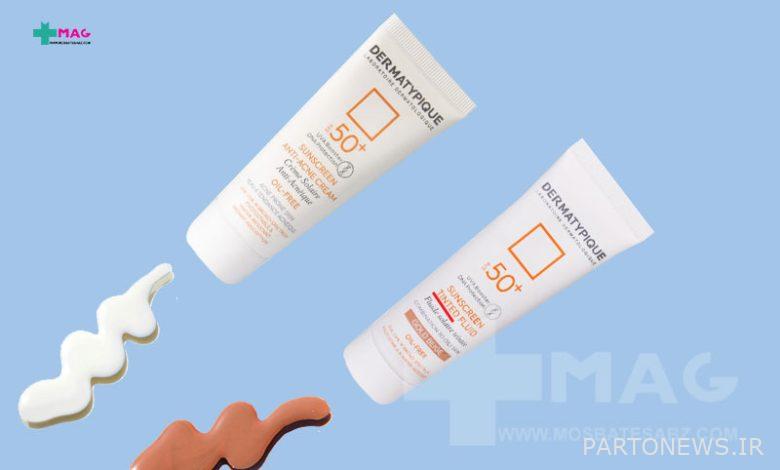Is colored or colorless sunscreen better? (Frequently Asked Questions)

Tinted sunscreen gives your skin more shine than colorless. These types of sunscreens also have SPF and protect the skin from the sun’s ultraviolet rays. Some of them can even take care of the skin in front of the computer screen and thus provide you with smoother and fresher skin. In this article, we will explain everything you need to know about the difference between colored and colorless sunscreen.
What we read in this article
What is colored sunscreen?
Colored sunscreens contain pigments called iron oxide and zinc oxide and titanium dioxide are also used in them. The pigments used in tinted sunscreen have the ability to reflect invisible light. Colored sunscreen protects and blocks the skin not only against UV rays, but also against the blue light emitted from computer screens and mobile phones. In the past, most people used mineral-based sunscreens, which left a chalky white layer on the skin after use and did not give the skin a beautiful appearance. To solve this problem, pigments were added to mineral-based sunscreens to provide better skin coverage.
The difference between colored and colorless sunscreen
The most important difference between these two creams is as follows:
Colored sunscreen helps to correct skin imperfections
Colored sunscreen creams give a light and non-greasy base color to the skin and cover minor blemishes and blemishes well.
Tinted sunscreen instead of powder cream
You can use tinted sunscreen instead of a regular foundation. In this case, you can give your skin a natural glow without having to wear heavy makeup. Colored sunscreens usually have a light texture and do not leave a trace of fat.
Colored sunscreen and skin protection against blue light
One of the biggest advantages of using tinted sunscreen over conventional sunscreens is that in addition to protecting the skin against ultraviolet rays from the blue light of computers, tablets, and mobile phones, they also protect the skin. Research shows that even short-term exposure to blue light is harmful to the skin and increases oxidative stress in the skin. This condition can lead to early wrinkles and dark spots on the skin. Sunscreen that has the ability to neutralize the destructive effect of blue light can be effective in preventing early signs of aging.
The difference between the ingredients in colored and colorless sunscreen
The difference between colored and colorless sunscreens is related to the ingredients in them. As we have explained, minerals such as zinc oxide and titanium dioxide are used in colored sunscreen to neutralize ultraviolet rays. Colorless sunscreen also contains chemical and mineral substances, with the difference that no pigment is used in it like colored sunscreen. Therefore, it does not color the skin.

Related posts
Should we apply sunscreen before makeup or after makeup?
If you want to be completely safe from sun damage, you should apply sunscreen directly to your skin. That is, if you are going to use another primer or foundation, you should apply them on your sunscreen. Of course, if you also use moisturizer, it is better to use it under (mineral) sunscreen.
Does colored sunscreen cause blemishes?
This belief is scientifically rejected that the use of colored sunscreen will cause blemishes. As we described, colored sunscreen has the same ingredients as regular sunscreen. The only difference in the composition is related to the presence of pigments that give color to the skin and cover imperfections such as pimples or spots. Therefore, there is no harmful compound in the tinted sunscreen that causes blemishes.
How to use regular sunscreen and tinted sunscreen
We explained the difference between colored and colorless sunscreen. It does not matter which of these two types of products you use. The important thing is to take at least ½ teaspoon of sunscreen for your face and apply it to your skin. If your skin is oily, use light and fat-free sunscreens. But if your skin is dry, apply sunscreen that also has moisturizing properties. Massage the cream well on the skin until it is absorbed and covers all parts of the face. If necessary, apply this cream to your neck as well.

Does colored sunscreen prevent the absorption of vitamin D?
The UV wavelengths of the sun are specific wavelengths that cause the formation of vitamin D in the skin. Clinical studies have never shown that daily use of sunscreens will lead to vitamin D deficiency in the body. People who use sunscreen on a daily basis are easily able to maintain the level of vitamin D in their body at an appropriate level. This is true for both regular sunscreen and tinted sunscreen.
Is colored or colorless sunscreen better?
Considering the difference between colored and colorless sunscreen, the question may arise, which one is better? Actually, the answer depends entirely on your needs. If you are only looking to protect your skin from the sun, you can use a colorless sunscreen. But if you want to have the advantage of covering and neutralizing the harmful effect of mobile, computer and tablet light in addition to this advantage, it is better to use colored sunscreen. Choose a tinted sunscreen that matches your natural skin tone.
final word
The difference between colored and colorless sunscreen is in their composition and the effect they leave on the skin. But both can protect the skin against UV rays. You can find and buy colored and non-colored sunscreens in the best brands at Positive Green Online Pharmacy. Don’t forget that sunscreen should always be present in your skin routine to prevent skin cancer, wrinkles, sunburn and blemishes.
Frequently asked questions about tinted and colorless sunscreen
Should we apply moisturizer or sunscreen first?
If you use chemical sunscreen, you should apply it first and then the moisturizer. But if you use physical or mineral sunscreen, apply it on the skin after moisturizing.
Please rate this article
[مجموع: ۰ میانگین: ۰]


